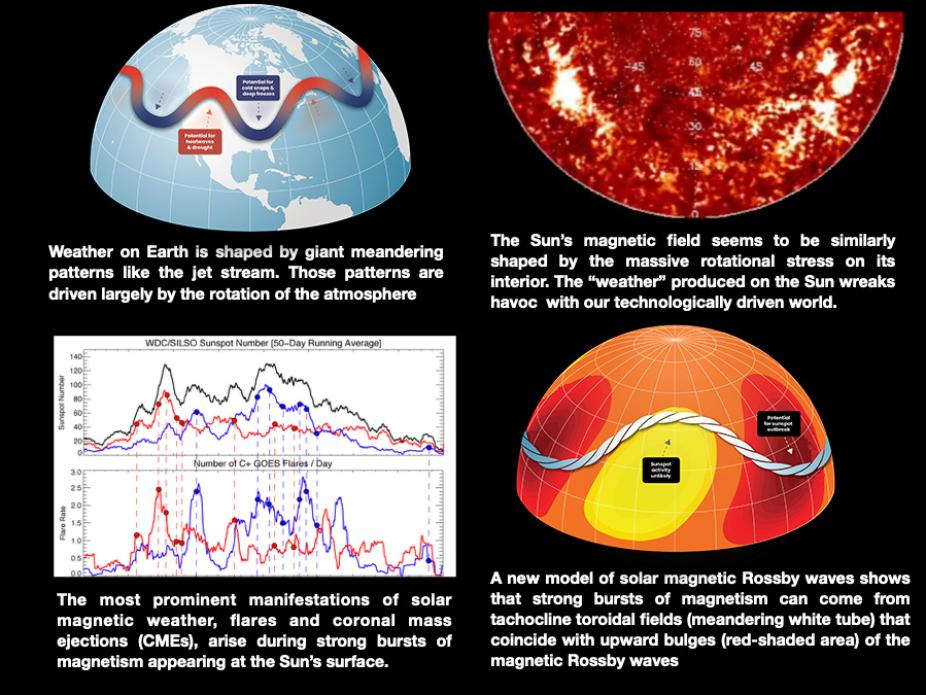Publication Name: Space Weather; First HAO Author's Name: Mausumi Dikpati
Rossby waves arise in thin layers within fluid regions of stars and planets. These global wave-like patterns occur due to the variation in Coriolis forces with latitude. In the past several years observational evidence has indicated that there are also Rossby waves in the Sun. Although Rossby waves have been detected in the Sun’s photosphere and corona, they most likely originate in the solar tachocline, the sharp shear layer at the base of the solar convection zone, where the differential rotation driven by convection transitions to the solidly rotating radiative interior. These waves differ from their Earth’s counterparts by being strongly modified by toroidal magnetic fields in the solar tachocline.

Recent simulations of magnetohydrodynamics (MHD) of tachocline Rossby waves and magnetic fields are demonstrated to produce strong “Tachocline Nonlinear Oscillations” (or TNOs), which have periods similar to those observed in the solar atmosphere - enhanced periods of solar activity, or “seasons” -- occurring at intervals between 6 months and two years. These seasonal/sub-seasonal bursts produce the strongest eruptive space weather events. Thus, a key to forecasting the timing, amplitude and location of future activity bursts, and hence space weather events, could lie in our ability to forecast the phase and amplitude of Rossby waves and associated TNOs. Accurately forecasting the properties of solar Rossby waves and their impact on space weather will require linking surface activity observations to the MHD of tachocline Rossby waves, using modern data assimilation techniques. Both short-term (hours to days) and long-term (decadal to millennial) forecasts of space weather and climate are now being made. We highlight in this article the potential of solar Rossby waves for forecasting space weather on intermediate time-scales, of several weeks to months up to a few years ahead.